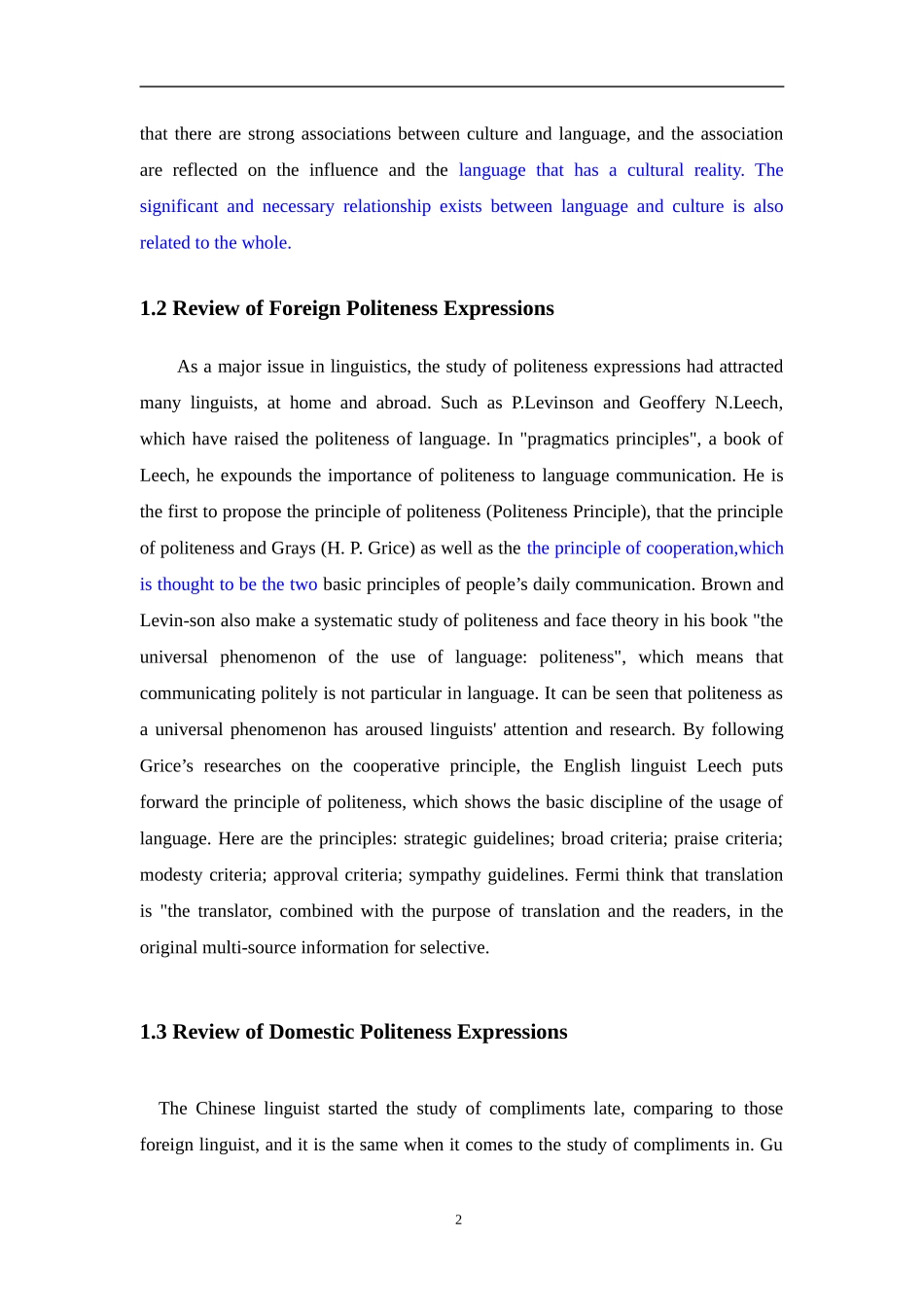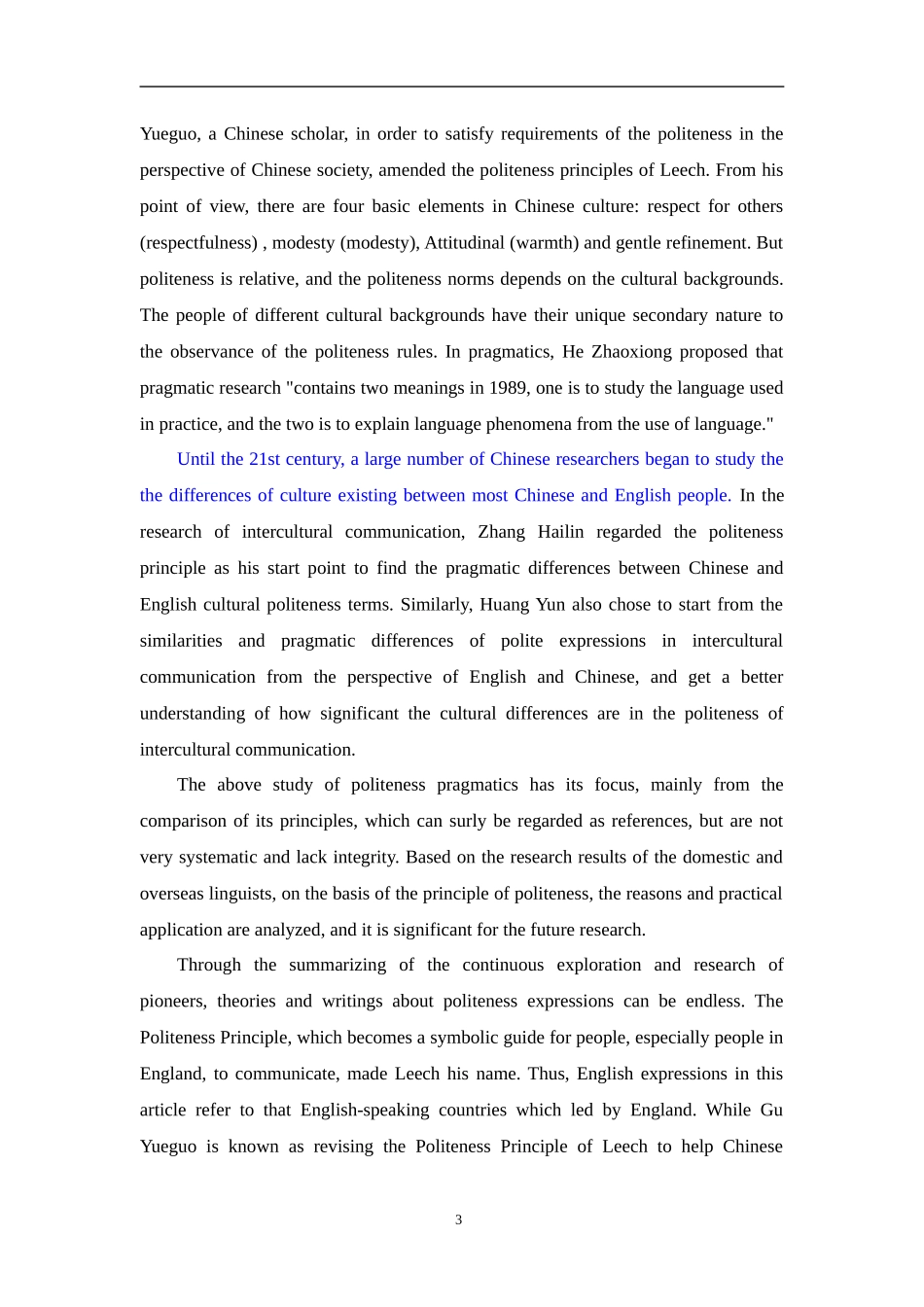1Chapter 1Introduction1.1 Introduction of Politeness Expressions and Intercultural Communication In different languages and cultures, courtesies can be different influenced both by contexts of culture and situation. And politeness expression, yardstick of human social activities, it is regarded as not only special but also universal phenomenon that reveals the social and cultural aspect, which stands for the evolution and civilization of human beings. Politeness, as a social activity, is closely related to language usage. We can understand the relationship between politeness and language from two aspects.Due to the irreversible process of globalization, intercultural communication is a significant part in people's daily life. As is known, politeness is an inalienable part of intercultural communication, a common social phenomenon, and a criterion for the people of various cultural backgrounds to maintain and observe. In intercultural communication, people who speak English or Chinese often use the cultural features and aesthetic tastes with their mother tongue to express their different politeness expressions, which makes it easy to make differences in idioms. Theoretically speaking , this paper studies the politeness expressions in China and English in the terms of intercultural communication, and put emphasis on the distinctions and finds out the diverse reasons so as to produce and create a better intercultural communication effect in the communication with foreigners.Cross-cultural communication commonly refers to communication that exists between people whose backgrounds are different. Dai Weidong gives us a definition of cross-cultural communication in English. Cross-cultural communication is also called as cross-cultu...


